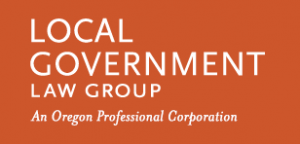Restrictions on Political Campaigning by Public Employees
Emily Guimont
From our Fall 2022 e-newsletter
Election season is here! This is a busy, exciting, and complicated time for many of our clients. In this article, we review ORS 260.432’s restrictions on political campaigning by public employees.
ORS 260.432 prohibits “public employees” from “promoting or opposing” certain political activities “while on the job during working hours.” It also forbids any person from requiring public employees to promote or oppose political activity. Finally, it requires public employers to post a notice that outlines its restrictions.
Who is subject to ORS 260.432?
ORS 260.432 restricts “public employees.” All non-elected public employees are “public employees” subject to ORS 260.432. Appointed officials are public employees when they act in their official capacity, such as attending commission meetings or working on projects for their commission.
Elected officials are not “public employees,” but remember that ORS 260.432 also prohibits “any person” from requiring public employees to oppose or promote certain political activities while on the job during working hours. Therefore, elected officials may not require public employees to engage in political activities. For example, an elected official violates ORS 260.432 when that official directs a public employee to prepare the official’s campaign materials while the public employee is on the job during working hours.
Volunteers are not “public employees.” However, you may restrict volunteers’ political activity through your own policies. Similarly, independent contractors are not “public employees,” but work performed by independent contractors for a public entity cannot promote or oppose certain political activities.
What political activities does ORS 260.432 restrict?
Under ORS 260.432, public employees may not engage in the following political activities while on the job during working hours:
• Promoting or opposing any political committee;
• Promoting or opposing the nomination or election of a candidate;
• Promoting or opposing the gathering of signatures on an initiative, referendum, or recall petition;
• Promoting or opposing the adoption of a measure; and
• Promoting or opposing the recall of a public office holder.
ORS 260.432 does not restrict activities that are not on this list. For example, a public employee may personally support or oppose a political issue as long they do not engage in any of the restricted political activities while on the job during working hours.
A common question is whether public employees may promote or oppose political activities by displaying or wearing political messages, distributing political material, or engaging in political discussions. ORS 260.432 does not outright forbid public employees from doing so, as long as they do not do so while they are on the job during work hours. However, public employers may implement written policies to regulate their employees’ political expression in the workplace. We encourage public employers to have such policies in place and we are happy to help write them.
When is a public employee “on the job during working hours?”
ORS 260.432 states that public employees may not promote or oppose certain political activities “while on the job during working hours.” It may be difficult to determine when an employee is “on the job during working hours,” especially if the employee is salaried. However, the general rule is that a public employee is “on the job during working hours” whenever that employee is performing work in an official capacity, regardless of when or where that work is performed.
When do ORS 260.432 restrictions apply?
For initiative, referendum, and recall petition activities, ORS 260.432 applies when the prospective petition is filed with the elections filing officer.
For ballot measures, ORS 260.432 applies when the ballot measure is certified to the ballot.
For candidates, ORS 260.432 applies when the individual becomes a candidate.
For political committees, ORS 260.432 applies when the political committee is active.
How is ORS 260.432 enforced?
The Secretary of State’s Elections Division enforces ORS 260.432. Any Oregon elector may file a complaint with the Elections Division alleging that a violation of ORS 260.432 has occurred. The Elections Division will investigate the complaint. If the Elections Division finds that the violation occurred, then the Elections Division will issue a fine to the person who violated ORS 260.432. The person can either pay the fine or request a hearing before an administrative law judge to contest the Election Division’s finding.
Have Additional Questions?
Contact our office! Situations in which ORS 260.432 may apply are often complex and we are happy to assist. Additionally, the Secretary of State publishes guides that you may find helpful: https://sos.oregon.gov/elections/pages/manuals-tutorials.aspx
